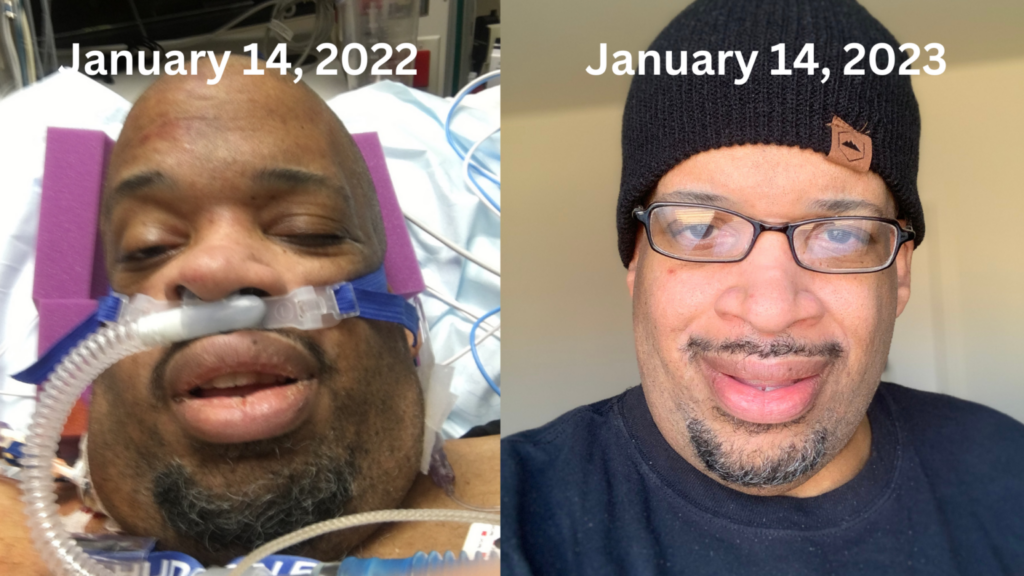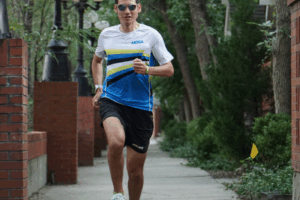Black Populations Are at Higher Risk for Blood Clots
Did you know that Black or African American people have up to 60% higher rates of life-threatening venous blood clots than white people?
- Blood clots can be fatal. Studies have shown that Black people have higher blood clot mortality rates than any other group.
- Black women face higher rates of maternal mortality connected to blood clots during pregnancy and in the three months after giving birth.
NBCA is committed to calling attention to these health disparities and equipping vulnerable populations with the information needed to stay healthy.
What is a venous blood clot?
A venous blood clot is a semi-solid or gel-like collection of blood that can form inside a vein. Blood clotting is a normal bodily process that helps prevent excessive bleeding from an injury or cut. However, sometimes blood clots can form abnormally for other reasons. This prevents normal blood flow and can cause serious and sometimes life-threatening medical issues.
Types of venous blood clots
- Deep vein thrombosis (DVT): A blood clot that occurs in a deep vein, most often in the leg or arm.
- Pulmonary embolism (PE): A blood clot that started elsewhere in the body, usually a DVT, that breaks free and becomes lodged in the lungs. This is a very serious and life-threatening condition.
- Deep vein thrombosis + Pulmonary embolism = Venous thromboembolism (VTE): This is the term referring to both types of venous blood clots.
What are the signs and symptoms of venous blood clots?
Venous blood clots (DVT and PE) are highly preventable and treatable. Early detection of the signs and symptoms is critical.
Deep Vein Thrombosis (DVT)
Deep vein thrombosis occurs when a blood clot forms in one of the body’s deep veins, usually in the legs, but sometimes in the arm. The signs and symptoms of a DVT include:
- Swelling, usually in one leg (or arm)
- Leg pain or tenderness often described as a cramp or charley horse
- Reddish or bluish skin discoloration
- Leg (or arm) warm to touch
Pulmonary Embolism (PE)
Clots can break off from a DVT and travel to the lungs, causing a pulmonary embolism (PE), which can be fatal. The signs and symptoms of a PE include:
- Sudden shortness of breath
- Unexplained cough, sometimes with bloody mucus
- Chest pain that’s sharp and stabbing; may get worse with deep breath
- Rapid heart rate
Call an ambulance or 9-1-1 immediately if you experience these PE symptoms.
Why are Black people at a higher risk for blood clots?
- Family history/genetics. Certain diseases that primarily affect people of African ancestry, including sickle cell disease, increase the blood clot risk. Sickle cell disease is an inherited blood disorder that causes healthy red blood cells to become sickle or crescent-shaped. These cells reduce blood flow, causing pain and life-threatening health conditions, including blood clots.
- Chronic health conditions. Black people who have blood clots tend to be more likely than whites to also have chronic health problems like high blood pressure, diabetes, obesity, or chronic kidney disease, which can lead to blood clots.
- Structural racism. Black Americans may be less likely to receive life-saving treatments for blood clots and less likely to be admitted to the hospital in a more serious condition than white people.
- Smoking/secondhand smoke. Black populations have similar rates of smoking as other racial and ethnic groups, but they’re more likely to die from tobacco-related causes. Black people have higher rates of exposure to secondhand smoke, including Black children.
- Surgery. Having surgery, including C-sections, increases your risk of a blood clot. Among U.S. adults, Black people have the highest risk of a DVT after they’ve had surgery, followed by white people, Hispanics, and Asian Americans.
What can you do to prevent blood clots?
- Know your risk for blood clots.
- Recognize the signs and symptoms of blood clots.
- Tell your doctor if you have any risk factors for blood clots.
- Before any surgery, talk with your doctor about the plan to prevent blood clots.
- Seek medical attention immediately if you have any symptoms of a blood clot.
Other steps you can take to reduce your risk for blood clots
- Know your family history. Tell your doctor and other family members if you learn that there is a history of blood clots among your relatives.
- If you are confined to a bed in a hospital or at home for any reason, ask your doctor what options exist to prevent blood clots.
- Get up and move if you’ve been sitting for a long time or traveling for a long time by plane, train, or car. Stand up, walk around, and stretch your legs every two to three hours.
- Maintain a healthy weight.
- Don’t smoke. Smoking reduces blood flow and increases your blood clot risk.
Learn from the experiences of others.
 The ICU Staff Called Me ‘Miracle Man’: Ted’s Story
The ICU Staff Called Me ‘Miracle Man’: Ted’s Story
I became committed to staying healthy in my late 40s. At 55, I was in the best shape of my life, hitting the gym three times a week. One day after exercising, I felt a pain in my left calf, which I attributed to an overzealous workout. Read more.

I Live Every Day Freely, With Love and Intent: Egypt’s Story
After walking up five flights of stairs to a friend’s Manhattan apartment, I rested at the top of the staircase. It took me almost 15 minutes to gain control of my breathing. I chalked it up to the extra pounds I had gained. Read more.

If I Hadn’t Been Persistent, My Outcome Would Have Been Much Different: Licinda’s Story
On April 22, 2021, I was experiencing shortness of breath, but I thought it was just allergies. I was walking my dog when my Apple watch started beeping to alert me of my extremely high heart rate. Read more.

The EMTs Had to Get Me Off the Floor: Michael’s Story
One week before my diagnosis, I noticed I was getting weak. Not weakness from being tired, but unusually weak without cause (I thought). I also had a nagging cough and was constantly clearing my throat. Read more.
Not Knowing What Caused My PEs is Frightening and Frustrating: Kaprena’s Story
I’m 47 and grateful to be alive. This is because I experienced pulmonary emboli (PE) on three separate occasions. About six weeks after giving birth, I began to feel tired and thought I was coming down with a cold. Read more.
If you’re Black and have experienced a blood clot, others could benefit from hearing your story.
Please fill out this form to share your blood clot story.





